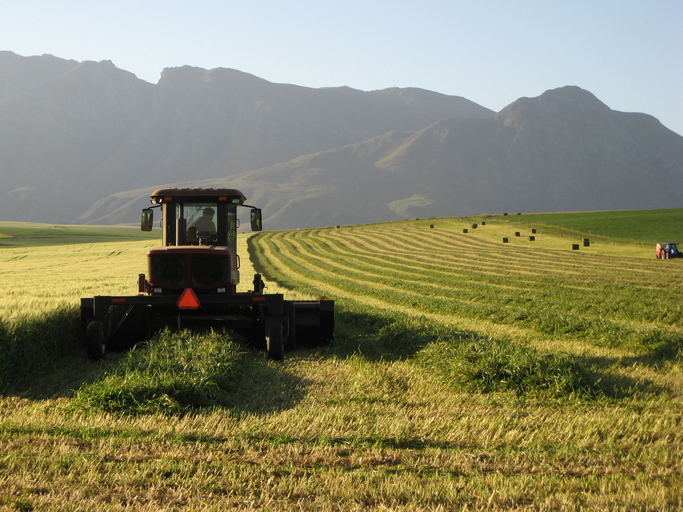According to Wandile Sihlobo, the chief economist of the agriculture business chamber Agbiz, South Africa’s agricultural sector is at risk due to a shift to hotter and drier El Niño weather conditions after a few years of favourable La Niña (cooler) conditions.

Harvester harvesting wheat in the Overberg region of South Africa with the Langeberg mountains as a backdrop. Picture: Rustynails / Getty Images
Sihlobo warned that if the country experiences a possible drought season, it will strain a large portion of the agricultural industry. He explained to News24 that approximately 20% of maize, 15% of soybean, 34% of sugarcane and nearly half of South Africa’s wheat are produced under irrigation. In addition, a significant area of fruits and vegetables relies on irrigation, which plays a crucial role in the livestock sector.
‘A possible drought would present major risks to food security,’ warned Sihlobo. ‘Even more worrying is that the agricultural regions that irrigate face continuous interruptions because of load shedding.’
Sihlobo notes that South Africa has had four seasons of La Niña-induced heavy rains from 2019/20 to 2022/23, which supported agriculture and led to higher yields across various field crops, fruits and vegetables. The livestock industry also benefitted from improved grazing pasture. However, he warns that a return of El Niño conditions could resemble the bleak agricultural conditions during the last El Niño drought in the 2015/16 season.
Dewald Olivier of the SA Feedlot Association pointed out that drought can be particularly challenging for livestock farmers, given that some parts of the country are still experiencing the effects of the recent drought. With lower rainfall levels, the quality and quantity of grazing land can be reduced, making it difficult for farmers to provide adequate feed for their livestock. In turn, it could lead to weight loss, poor health and reduced productivity among livestock. Suppose the availability of grazing land is reduced. In that case, livestock farmers may need to purchase additional feed to supplement their animals’ diets, which can be expensive and add to the overall cost of production. Furthermore, drier and warmer conditions can create a more favourable environment for certain diseases to spread, affecting livestock health.
Follow us on social media for more travel news, inspiration, and guides. You can also tag us to be featured.
TikTok | Instagram | Facebook | Twitter
ALSO READ: First sighting of an albino bottlenose dolphin in Africa














